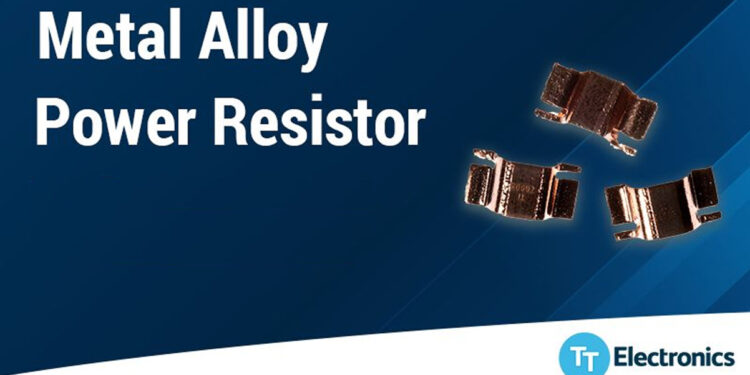TT Electronics extends automotive AEC-Q200-certified current sense resistors portfolio with launch of SMT Kelvin shunt resistors. The new LRMAP4026 metal alloy power resistors offer true four-terminal connection for accurate sub-milliohm current sensing applications.
TT Electronics, a global provider of engineered technologies for performance critical applications, today announced its LRMAP4026 series low resistance metal alloy power resistors designed for power supply, motor drive, and battery monitoring applications. This resistor series provides four-terminal Kelvin precision and high current capacity to all industrial applications, including automotive. Because four-terminal Kelvin connections improve precision, only a small portion of a design’s error budget is consumed, enabling greater design freedom elsewhere in the circuit. The gullwing design provides spacing from the PCB which minimises the board temperature rise and enhances reliability of the assembly.
“The electron-beam welded SMT shunt LRMAP4026 is the latest addition to TT’s growing portfolio of SMT current sense resistors with AEC-Q200 qualification,” said Brian Stephenson, Director of Engineering, TT Electronics. “This new series helps our customers achieve accurate and stable current measurement, providing resiliency to surges whilst controlling the amount of heat entering the PCB tracks.”
LRMAP4026 offers up to 5W in a 4026 footprint. Available in seven values from 0.2 to 3mΩ, LRMAP4026 gives designers a high degree of flexibility in a rugged component, featuring a wide temperature range of -65 to +170°C suitable for demanding applications. The four-terminal design allows complete separation of current path and voltage sense – reducing the difference between unmounted and mounted resistance and TCR values, a common problem with two-terminal types.
With 1% tolerance and TCR of 50ppm/°C, this product combines precision with the high surge capacity of metal alloy technology. Its high surge tolerance assures reliable performance under inrush and momentary short circuit conditions.
Features
- 4-terminal Kelvin gullwing terminations
- Resistance range 0.2mΩ to 3mΩ
- 5W rating in compact footprint
- Robust welded construction
- Low inductance
- AEC-Q200 qualified


































